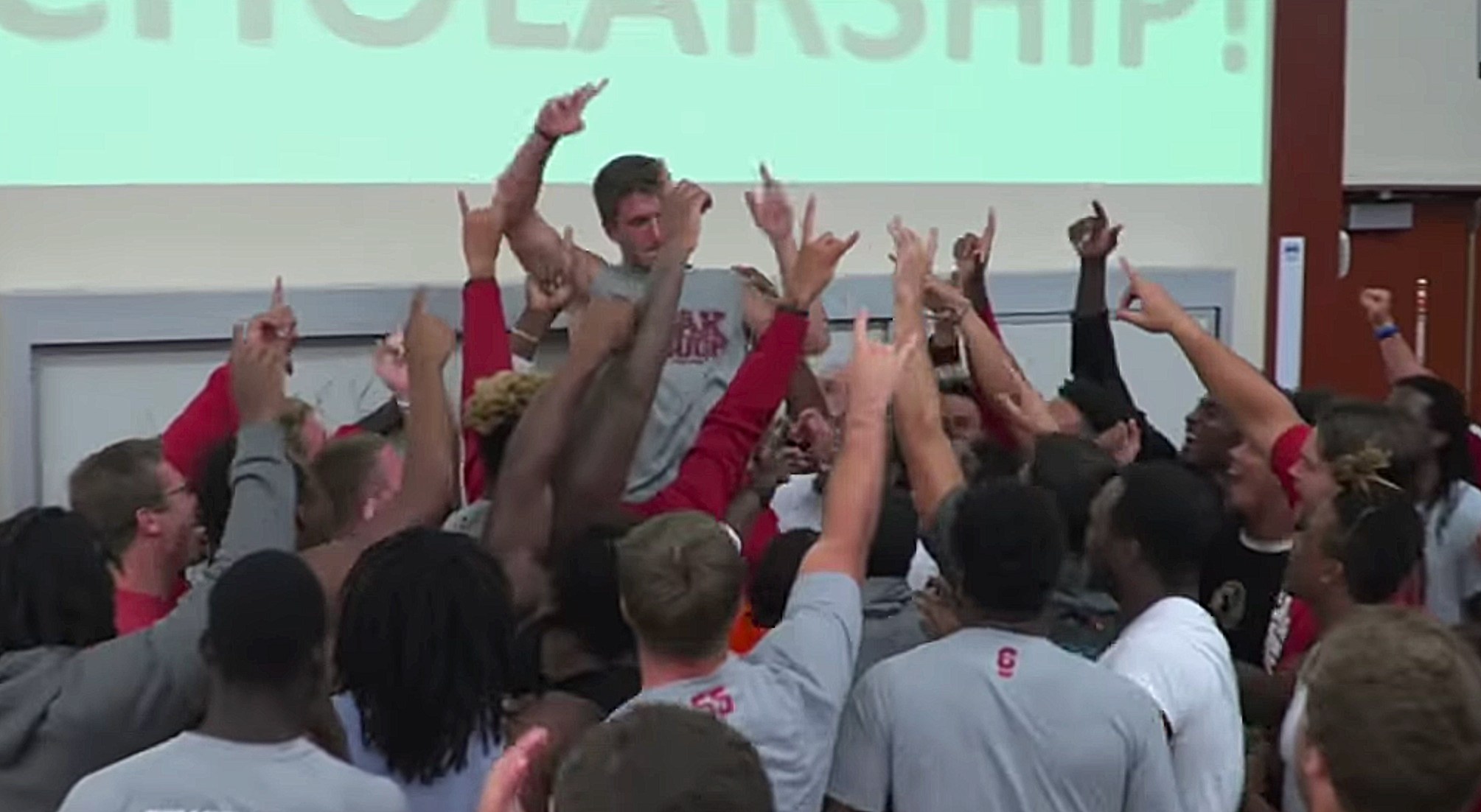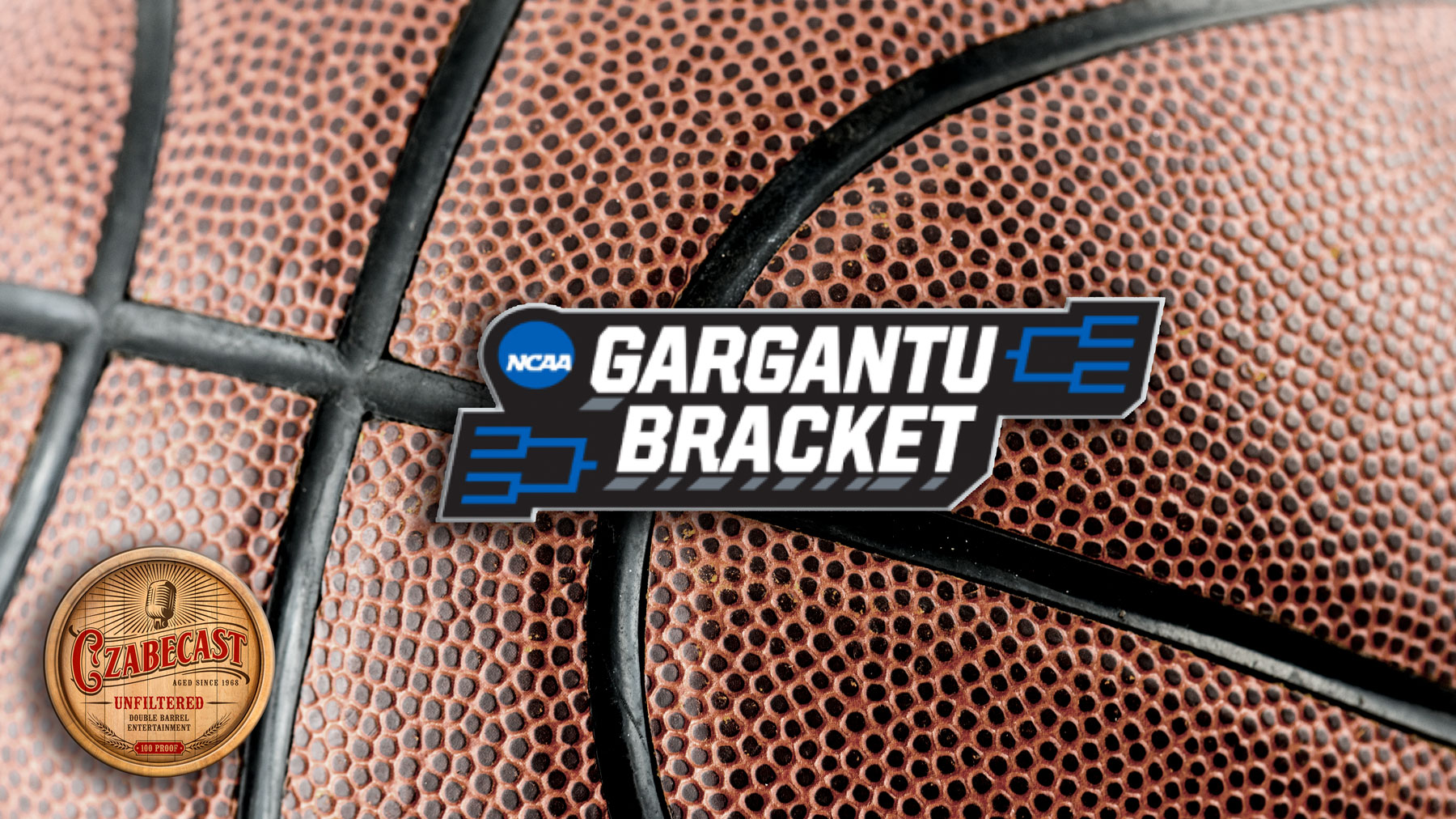Let me begin by saying that Jay Bilas is one of the best college basketball analysts on television. He understand the game deeply, and has a communicator’s touch when it comes to relaying that understanding to the audience.
Jay Bilas is also smarter than me, on the whole. He attended Duke, and earned his law degree at Duke, while serving as an assistant to Coach K.
However when it comes to the issue of paying players in the two major “revenue sports” in college, Bilas either has a blind spot, or is wracked with a degree of guilt at his own attractive TV compensation.
Here’s what Bilas wrote most recently, in the wake of the shoe-company bribing scandal that has rocked college basketball.
These players are worth a ton of money, to schools, to agents and to shoe companies. And these players are worth far more than a scholarship. In fact, a scholarship is the LEAST they are worth. Schools do not have to offer scholarships, but do. They do not have to offer stipends, but do. If they didn’t, they would be hurt in the marketplace, even though there is a unilaterally imposed wage cap on athletes.
When have you ever heard of a coach being steered to an agent? When have you ever heard of bribes to get a coach to accept a job? When have you ever heard of a bribe to get an athletic director to switch schools? You don’t hear such things because those people are allowed to be paid in a free market. It is an aboveboard business, and it works in an orderly fashion. There are contracts with contract remedies.
That pesky free market works incredibly well and efficiently for everyone else; it is foolish to assert that it would not work just as well for college athletes. After all, these schools know exactly whom to recruit and whom to play the most minutes in the games. They know whom to pay and how much.
But coaches are coaches, and players are players. The former are middle aged professional adults, who, if they are good, can last a school 20 years or more. The players are still adolescents, who have a mandated maximum shelf life of just 5 years.
Bilas wants a “pesky” free market for college athletes, but fails to account for a significant reality of big time sports in America.
Our leagues, are distinctly NOT free markets.
Every pro league we have, is essentially a closed shop for talent. This is not Formula One, or the English Premiere League where the biggest pile of money rules. In the NFL, the NBA, the NHL, and MLB…. there are drafts, salary caps, trade deadlines… and on and on. To simply wish that the “pesky” free market should allow collegiate players to be bid upon as precious commodities, is to say that these commodities once purchased, should also be allowed to be owned and controlled by their respective schools.
Surely, Bilas would recoil at that idea, no?
If a left tackle is deemed worthy of a $100,000 annual salary – and not a $45,000 scholarship and room and board – then what are the terms of his contract? How many years must he play in college once signed at that rate? Can he be traded? Can he be cut? Can he be fined for violating team rules? Would he still have to go to class, or maintain a C average?
What would be the entry mechanism for these valuable players into the college sports ecosystem? Even our pro leagues don’t just let teams “buy” the best college talent available. There’s an entry draft for each, designed to create “parity” amongst member teams (although the Browns are certainly putting that theory to the test).
Would players be okay with Division I holding an annual high school “draft.” (I’m sure ESPN, and Bilas’ cadre of well paid pundits would absolutely delight in such a thing! Programming!)
Would the next great high school left tackle be willing to be drafted by say, Tulane, instead of Alabama in order to earn his ‘pro’ salary of $100,000? What if he hates gumbo?
Mr. Bilas, hello? Are you still there?
The fallback position of the “pay-the-players” crowd, is that they should at least be allowed to capitalize on their name and likeness while in college. At quick glance, reasonable. For instance, Leonard Fournette and Christian McCaffrey were exciting, nationally known talents at both LSU and Stanford.
So what if they sign with Nike or Pepsi while still in school, right?
Two problems.
One is the fact that yes, both players are famous, but only because of the stage they play on – a stage built by colleges and universities who have been playing football for 100 years or more. A stage that likely has siphoned general tuition funds and student fees to build and expand. These are colleges that maintain a fanbase, a massive stadium, an alumni network, and have negotiated television deals with entities like Mr. Bilas’ ESPN. While wonderful, they are only marketable if anybody has ever heard of them. Neither would be worth much to Pepsi had they chosen to play at Eastern Illinois or Northern Arizona.
The second problem would be the inevitable “astro-turf” endorsement deals for good-but-anonymous players on big programs, who actually have no real marketability. Let’s call this: legalized “under the table” payments to players. You would have programs like Alabama and Ohio State finding their free safeties and centers with local car dealership “endorsements” that pay mid-five-figures. Prominent boosters might find “endorsements” for these kids in their various businesses, acting as a shadow payroll to the program.
Selling your autograph for “what it’s worth” falls under the same problem. It won’t be long until an Alabama left guard is being paid $50,000 to hold an “autograph session” that is really just money funneled through booster clubs or alumni.
So what’s wrong with that, you ask? Nothing… in theory.
Only it would split most conferences in half like a piece of aged firewood in no time. Vanderbilt isn’t going to keep letting a professionalized Alabama program beat it senseless every year, with 25 players on local endorsement deals. Neither would Wake Forest to Duke in basketball.
At that point, you would have completely demolished the college sports ecosystem that most people think is still a pretty good thing, despite the absurd buyouts of failed college football coaches.
The strict rules on extra benefits in college athletics, helps ensure the relative parity that makes D1 sports such an attractive thing to televise for millions of dollars. Without it, the excitement of Iowa beating Ohio State would become even more unlikely.
In exchange for not being paid hard money to play their sport, the college athlete is free to choose where he wants to play, and for how long. They aren’t drafted. They can’t be traded. They can quit if they like. And they still get a mountain of benefits (and yes, even up to $5,000 in living expenses) without paying a lick of taxes on it all!
An academic scholarship, dutifully pursued toward a degree, has benefits to the student athlete which extend far into their future. Best of all: it’s a benefit that cannot by its nature, be wasted on frivolous luxuries. A $100,000 a year college sports “salary” showered on 19 year olds, is almost sure to be utterly squandered by many of them on fancy cars, women, and other typical nonsense.
I know damn well, the 20 year old ME couldn’t safely stash that kind of money in the bank and forget about it!
In his piece, Bilas say: “Instead, we should endeavor to change the rules to make them fair, reasonable and moral.”
Sounds nice. But who has the final say on what is “fair?” Or, good grief, “moral?”
The NCAA should only go as far as to make their rules a) Legal and b) Sustainable.
As long as there are legions of high school players eager to get that “full ride” which Bilas finds to be “immoral” then there’s no reason for the NCAA to change. The “pesky” market is sending a clear and un-mistakable signal: “Playing for Alabama for nothing more than room, books, board, and the chance to be on ESPN and CBS…. is a fantastic deal! Sign me up!”
And unless I’m missing something, these colleges are nowhere near running out of takers.
I’ll finish by posting this excellent piece by ESPN’s College GameDay about the power of a scholarship, and what it means to real people, and real families. Try telling them, that their sons are being exploited. I bet you’d get a real education on the matter.





Not to mention the Title IX implications…
Czabe, agree with all of the above, but there is one kinda big point that you are either missing or completely leave out of your article. The Ohio State’s, Alabama’s and Clemson’s of the world are already paying their players, illegally and under the table.
The NCAA needs to pay more than lip service to their own rules if they expect to maintain the status quo, which I completely agree would be a good one if only the rules were followed and enforced in a fair and even manner.
https://pbs.twimg.com/media/Bo2GlUkIIAALjjc.jpg
My niece has 200 thousand student loan bill she would have been. Very happy tp have had a scholarship
I could write some long prose about how good this piece is (and it’s DAMN good)…but instead, I’ll just say this…Dilly, Dilly.
Dilly, Dilly…indeed.
Dilly dilly!
Thanks for finally making this point: “only because of the stage they play on – a stage built by colleges and universities who have been playing football for 100 years or more…These are colleges that maintain a fanbase, a massive stadium, an alumni network…” I give because of the history I have at my school. I can’t get rid of that association – ever. It doesn’t matter who wears the jersey, as long as it is ours.
Czabe, this is perhaps the best piece you’ve written. Bilas’ use of free market theory is flawed. Let’s assume it’s a free market; it clearly operates inefficiently because not all buyers and sellers have equal access to information. Because of that, the NCAA institutes rules and regulations to drive it to improved efficiency, a destination it won’t reach but must continue to pursue.
Bilas is not smarter than you, Czabe.
A “free market” like Bilas suggests would be much much worse than what we currently have. However like another comment mentioned, the massive flaw in the current setup is that the rules are followed. Athletes are being paid handsome sums with no repercussions. That’s how you get Julius Randle showing up to a college press conference in custom “Yeezy’s”
I’ll just leave this link to jaw-dropping locker rooms here:
https://www.foxsports.com/college-football/gallery/the-15-most-jaw-dropping-college-football-locker-rooms-102016
Well said
T.L.D.R. (to long didn’t read). Do parents of players also get paid under the Bilas plan? Lavar Ball could probably use a few bucks to grease the Shang Hai PD right now. How about kids who turn down the MLB draft out of High School and go to college to play ball, can they get paid while Jay is handing out the cash?
Re: game v Minn. Whoa…6-2 team is good. Skins got 30, probably should have had 44. What happened to the defense when Minn seemed to be good for about 11 yards a play.
great post, Czabe, getting a D1 full ride is a heckuva deal, if the small percentage of college athletes who are worth a ton of money as Bilas writes feel that they are worth more than they are receiving from their employer/university through their scholarships, exposure, experience etc, they are free to leave that employer and see if other employers will pay them more than what the scholarships are worth